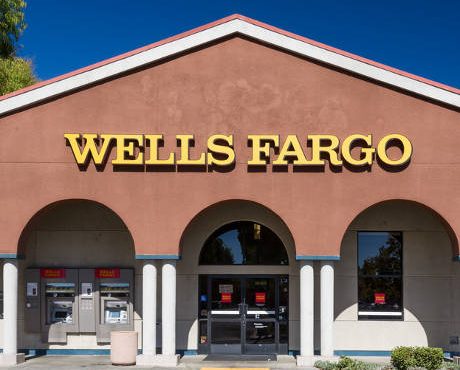Wells Fargo Stock: Drop Offers Good Buying Opportunity
Wells Fargo & Company’s (NYSE:WFC) scandal involving two million fraudulent accounts has cost Warren Buffett, its largest single shareholder, over $1.5 billion in less than a week. After the news about the scandal broke out, WFC stock plunged to the lowest level in about three months as investors bailed out of the company, questioning its business practices.
Wells Fargo stock began its slide last week as financial media reported that the U.S. Consumer Financial Protection Bureau has imposed a $185-million fine on Wells Fargo, as its retail banking employees,under pressure to cross-sell financial products and meet sales targets, opened two million accounts for customers who never authorized them. Over the past five years, more than 5,300 employees also applied for credit cards for their customers without their knowledge. (Source: “Wells Fargo to Pay $185 Million Fine Over Account Openings,” The Wall Street Journal, September 8, 2016.)
Wells Fargo has one of the most extensive retail networks in the U.S. with more than 8,700 locations and more than 12,800 ATMs. Wells Fargo’s asset base remains strong as it maintains healthy capital levels while continuing to return capital to shareholders.
In a settlement with the federal authorities for malpractices which Wells Fargo itself reported, the bank paid the highest-ever fine to the regulator in an effort to move on and leave the incident behind it. (Source: Ibid.)
WFC Stock: A Solid Dividend-Paying Stock
So how should a long-term investor in WFC stock react to this bad news, which has jolted one of the best-managed banks in the U.S.?
Amid all the bad publicity and noise, it’s natural for shareholders of any public company to panic and start hating the company. The knee-jerk reaction to such news usually is to follow the herd mentality and sell.
So let’s pause for a while and think about all those positive factors which led Warren Buffett, chairman of Berkshire Hathaway (NYSE:BRK.B) and the world’s most successful stock picker, to accumulate Wells Fargo stock since 2011.
Wells Fargo was one of Buffett’s three important “moves” in 2011, and he justified his decision to purchase the 7.6% stake in Wells Fargo in these words in 2011: “The banking industry is back on its feet, and Wells Fargo is prospering. Its earnings are strong, its assets solid and its capital at record levels.” Fundamentally, nothing has changed since then. (Source: “2011 letter,” Berkshire Hathaway Inc., February 25, 2012.)
Wells Fargo Stock Backed By Strong Fundamentals
At over three percent, Wells Fargo has the highest dividend yield among its close peers, including JPMorgan Chase & Company (NYSE:JPM) and Bank of America Corporation (NYSE:BAC). The quarterly dividend for WFC stock investors has surged three times since 2011, when Warren Buffett entered this trade. Wells Fargo paid $0.38 a share quarterly dividend in the second quarter of this year from $0.12 a share in the same period in 2011. (Source: “Stock price and dividend,” Wells Fargo & Company, last accessed September 15, 2016.)
Chief Executive John Stumpf defended the firm and the efforts it had taken to stop the behavior.
In an interview with The Wall Street Journal, Stumpf said that, “There was no incentive to do bad things,” and called the conduct that led to last week’s settlement with federal and local authorities, “not acceptable,” adding that the bank doesn’t, “want one dime of income that’s not earned properly.” (Source: “Wells Fargo CEO Defends Bank Culture, Lays Blame With Bad Employees,” The Wall Street Journal, September 13, 2016.)
It seems short-term investors in WFC stock have ignored all those positive factors which helped the bank to outperform its peers on this roller-coaster ride banking stocks have experienced in 2016.
Wells Fargo’s 10% plunge since August 31 could present a good opportunity for long-term income investors to add on to their positions.
